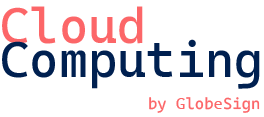Understanding Cloud Cost Optimization
What is Cloud Cost Optimization?
Cloud cost optimization is the practice of managing and reducing expenditures while maximizing the performance and efficiency of cloud resources. Think of it as tuning a car for optimal performance: you want to ensure it runs smoothly without wasting gas. Similarly, businesses need to ensure that they are getting maximum value from their cloud investments without overspending.
Why is Cloud Cost Optimization Important?
- Rapid Growth of Cloud Spending: Gartner estimates that global public cloud services revenue will reach over $400 billion. As more organizations adopt cloud services, managing costs effectively will be essential.
- Varied Pricing Models: Different cloud providers utilize various pricing structures, including pay-as-you-go, reserved instances, and spot pricing. Navigating these models can be complex and requires expertise.
- Avoiding Resource Waste: Unused or underutilized resources can quickly pile up costs. Optimizing cloud expenses helps identify and eliminate waste.
Key Cloud Cost Optimization Strategies
1. Resource Monitoring and Management
Utilizing tools for continuous monitoring of cloud resources is critical:
- Cloud Management Platforms (CMPs): These tools provide visibility into resource usage and can help in identifying underused resources.
- Alerts and Reporting: Set up alerts to notify you when spending exceeds predetermined thresholds. Regularly review financial reports to identify trends and areas for improvement.
2. Right-Sizing Resources
Just like choosing the right size vehicle for your needs, right-sizing cloud resources can promote cost efficiency:
- Evaluate Performance Metrics: Continuously analyze CPU, memory, and storage usage metrics to determine if resources match workload needs.
- Scale Resources Dynamically: Use auto-scaling solutions to adjust resources based on demand. This ensures you’re not over-provisioning during off-peak times.
3. Utilizing Reserved Instances and Savings Plans
Consider these strategies for significant savings:
- Reserved Instances: Purchase reserved instances for predictable workloads to gain substantial discounts compared to on-demand pricing.
- Savings Plans: Explore cloud provider savings plans that offer flexible commitment options for long-term cost reduction.
4. Implementing Tagging Strategy
Implementing a tagging policy can help in tracking costs more effectively:
- Resource Tagging: Assign tags to each resource for better tracking and accountability. For example, tags can include department, project, or purpose.
- Cost Allocation Reports: Use tags to generate reports that demonstrate where spending occurs, enabling teams to strategize for further optimization.
5. Containerization and Microservices
Migrating from traditional monolithic architectures to microservices can yield both performance and cost savings:
- Efficiency of Containers: Containers allow for better resource utilization. Since they can run multiple applications on a single server, organizations can optimize resource consumption.
- Scalability: Microservices can be scaled independently, providing greater efficiency and ensuring that you only pay for what you need.
Real-World Examples
To illustrate these strategies in practice, consider the following examples:
- A Retail Company: A national retailer leveraged reserved instances to handle their seasonal sales with predictable workloads. They avoided spikes in costs during peak sales seasons by committing to a certain level of usage at discounted rates.
- A Financial Service Firm: A financial services firm adopted a tagging strategy to identify cost centers. By analyzing tagged data, they discovered that specific applications were not essential and decommissioned them, resulting in a 20% reduction in monthly cloud expenses.
- A Tech Startup: A tech startup implemented a CMP for real-time monitoring of their cloud environment. They quickly identified underutilized EC2 instances and adjusted their resource allocation, leading to a 30% monthly savings.
Benefits of Cloud Cost Optimization
The benefits of implementing effective cloud cost optimization strategies are manifold:
- Increased Profitability: By reducing unnecessary costs, businesses can reinvest in innovation and growth.
- Enhanced Visibility: Improved monitoring tools provide insights into resource expenditures, helping organizations make informed decisions.
- Agility and Scalability: Organizations can scale resources up or down according to demand without incurring excessive costs.
Conclusion
In today’s digital landscape, effectively managing cloud costs is essential for ensuring sustainable growth and operational efficiency. By implementing strategies such as resource monitoring, right-sizing, utilizing reserved instances, and embracing containerization, organizations can optimize their cloud spending significantly.
As the cloud landscape continues to evolve, businesses must remain agile and adapt their strategies to keep pace. The key takeaway is simple: proactive management of cloud resources not only leads to significant cost savings but also empowers organizations to harness their cloud environments effectively. As you embark on your cloud journey, remember that cloud cost optimization is not a one-time project but an ongoing process that necessitates continual adjustments and refinements.
FAQ
What are the main benefits of cloud cost optimization strategies?
The main benefits include increased profitability, enhanced visibility into resource expenditures, and improved agility and scalability in resource management.
How can I start optimizing my cloud costs?
Start by implementing resource monitoring tools, evaluating your current resource usage for right-sizing, and considering reserved instances for predictable workloads.
Is cloud cost optimization a one-time task?
No, cloud cost optimization is an ongoing process that requires regular evaluations and adjustments based on changing business needs and cloud usage patterns.
